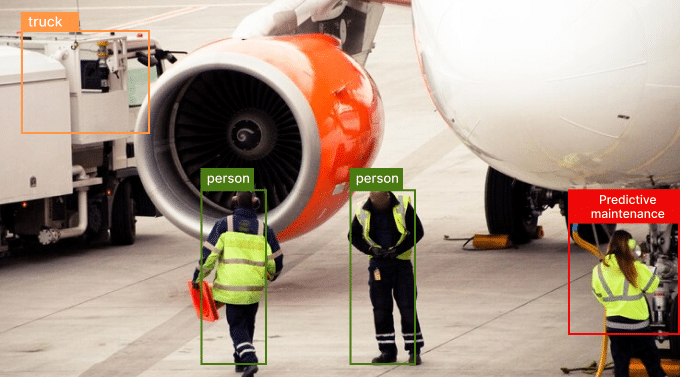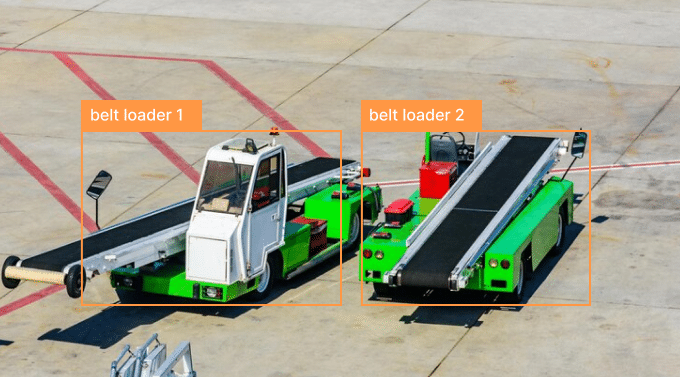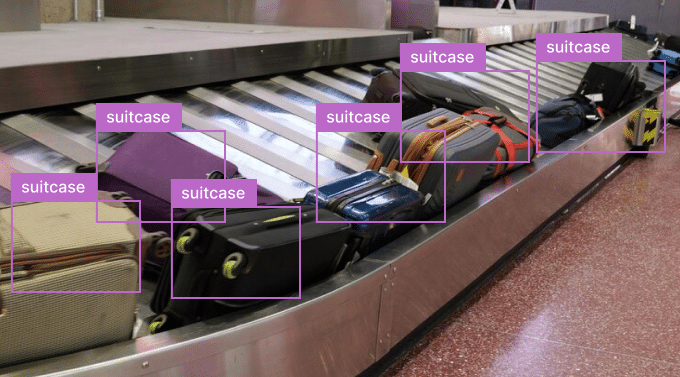Key Challenges in the Aviation Industry
The aviation industry faces unique and complex challenges that have a direct impact on safety, cost management, and regulatory compliance. Some of the most critical challenges include:
-
Safety: Safety remains the top priority in aviation, with a significant focus on preventing accidents and ensuring passenger protection. Traditional safety measures have relied on rigorous training, manual inspection, and compliance with regulations. However, with the advent of advanced AI technologies like computer vision, airlines are enhancing safety through automation and real-time monitoring, which allow for rapid threat detection and response.
-
Security: The increasing threat of terrorism and various security issues push the aviation sector to continuously adapt and improve its security measures. AI-powered computer vision assists by detecting unauthorized access, monitoring unusual passenger behavior, and enhancing overall security protocols.
-
Cost Control: Managing costs without compromising service quality is another challenge. High operational costs, including airport maintenance, labor, and regulatory fees, impact profitability. AI technologies like computer vision help reduce these costs by automating routine tasks, reducing errors, and optimizing resource allocation.
-
Regulations: The aviation industry operates under complex local, national, and international regulations, especially regarding security and passenger data protection. Integrating AI solutions requires careful planning to ensure compliance with these regulatory frameworks, particularly regarding data privacy and handling.
Major Applications of Computer Vision in Aviation
Computer vision has several key applications within the aviation industry, each designed to address one or more of the industry’s primary challenges.
1. Enhanced Security and Surveillance
Computer vision, coupled with AI and IoT technologies, is revolutionizing security and surveillance in airports. Through facial recognition, behavior analysis, and object detection, AI-powered systems can detect suspicious activity, monitor passenger behavior, and help airport personnel respond proactively. Cameras equipped with computer vision can identify potential security breaches, flag suspicious individuals, and improve crowd management at checkpoints, boarding areas, and baggage claim zones. This integration of computer vision contributes to an overall safer airport environment, providing peace of mind for both passengers and staff.
2. Predictive Maintenance

The demand for predictive maintenance in aviation is growing, with market forecasts estimating growth from USD 1.5 billion in 2020 to USD 3.8 billion by 2025. Computer Vision for Aviation Safety enhances predictive maintenance by identifying potential faults in aircraft components and predicting maintenance needs to enable timely repairs. This proactive approach prevents costly breakdowns and boosts operational safety by detecting issues before they escalate. Through real-time monitoring, computer vision systems analyze wear and tear on aircraft, allowing airlines to optimize maintenance schedules, minimize downtime, and ensure safe and reliable operations.
3. Passenger Tracking and Flow Management
Managing passenger flow efficiently is crucial for maintaining smooth airport operations and enhancing the passenger experience. Computer vision enables real-time tracking of passengers, monitoring of crowd density, and analysis of behavior patterns to identify potential risks or bottlenecks. This is particularly valuable in high-traffic areas such as security checkpoints, boarding gates, and baggage handling sections. By monitoring crowd flow and density, airport staff can adjust resource allocation, reduce wait times, and streamline boarding processes, enhancing the overall passenger experience.
4. Object Detection and Recognition

Computer vision-based object detection and recognition systems play a significant role in aviation security and operations. These systems help identify prohibited items in luggage, detect foreign objects on runways, and monitor aircraft surroundings for potential hazards. For instance, during baggage screening, AI-driven object detection can quickly identify suspicious items and alert security personnel. This technology also assists in aircraft maintenance and runway surveillance, reducing the risk of accidents caused by unnoticed foreign objects on the runway.
5. Intelligent Baggage Handling

Lost or misplaced luggage is a common issue in air travel that impacts customer satisfaction. Computer vision streamlines baggage handling by using image recognition and deep learning to track and manage luggage throughout the airport. AI-based systems scan baggage tags, match them with airline databases, and ensure that luggage is routed correctly. Additionally, computer vision applications can identify ground vehicles and track baggage carts, which optimizes ground logistics and improves the overall efficiency of the baggage handling process.
6. Facial Recognition for Passenger Identification
Facial recognition technology, driven by computer vision, has simplified passenger identification, enabling faster boarding and enhancing security. By comparing passenger faces with pre-stored images in databases, the technology confirms identities in real-time. This not only speeds up the boarding process but also ensures that only verified passengers are allowed access. In security applications, facial recognition aids in identifying suspected individuals, helping authorities maintain airport safety and enforce regulatory compliance.
7. Cargo Inspection and Security
Ensuring the safety of cargo is vital for the aviation industry, particularly for international flights. Advanced computer vision algorithms can scan cargo for potential threats, including weapons, explosives, and contraband. AI-powered inspection systems use deep learning models to identify specific patterns and anomalies within cargo, flagging items that may pose a threat. This application accelerates the cargo screening process and reduces the risk of dangerous items being loaded onto aircraft.
8. Airport Safety and Perimeter Surveillance
Maintaining safety within airport premises and along perimeters is a critical aspect of airport operations. Computer vision technology can enhance airport safety by analyzing real-time video feeds from cameras positioned throughout the airport. These systems can detect unauthorized access, alert security teams to potential perimeter intrusions, and help authorities monitor movement patterns. Additionally, computer vision can reduce the occurrence of false positives, enhancing the accuracy and reliability of security protocols. These technologies also support fire and smoke detection, which further ensures passenger safety.
9. Computer Vision in Missile Guidance and Defense Applications
In military and defense applications, computer vision plays a role in aerial weapon systems. Vision AI assists in guiding missiles by analyzing the location and movement of targets, ensuring greater accuracy in mission-critical situations. Image processing, combined with intelligent sensors, allows AI systems to detect targets in a way that surpasses conventional detection methods, making these systems more reliable and effective in defense contexts.
Key Takeaways
The aviation industry is making valuable use of computer vision for different applications for a wide range of purposes. Latest advances in emerging technologies enable the development of strategic robust machine learning solutions while significantly improving the cost of computer vision. The implementation of computer vision technology comes up with major challenges like extensive data processing capabilities and seamless integration with existing systems.
Do you want to learn more about AI video analytics software and its applications in the aviation industry? Are you on the lookout for an advanced intelligence solution? Get in touch with our professionals and delve deeper into AI.














